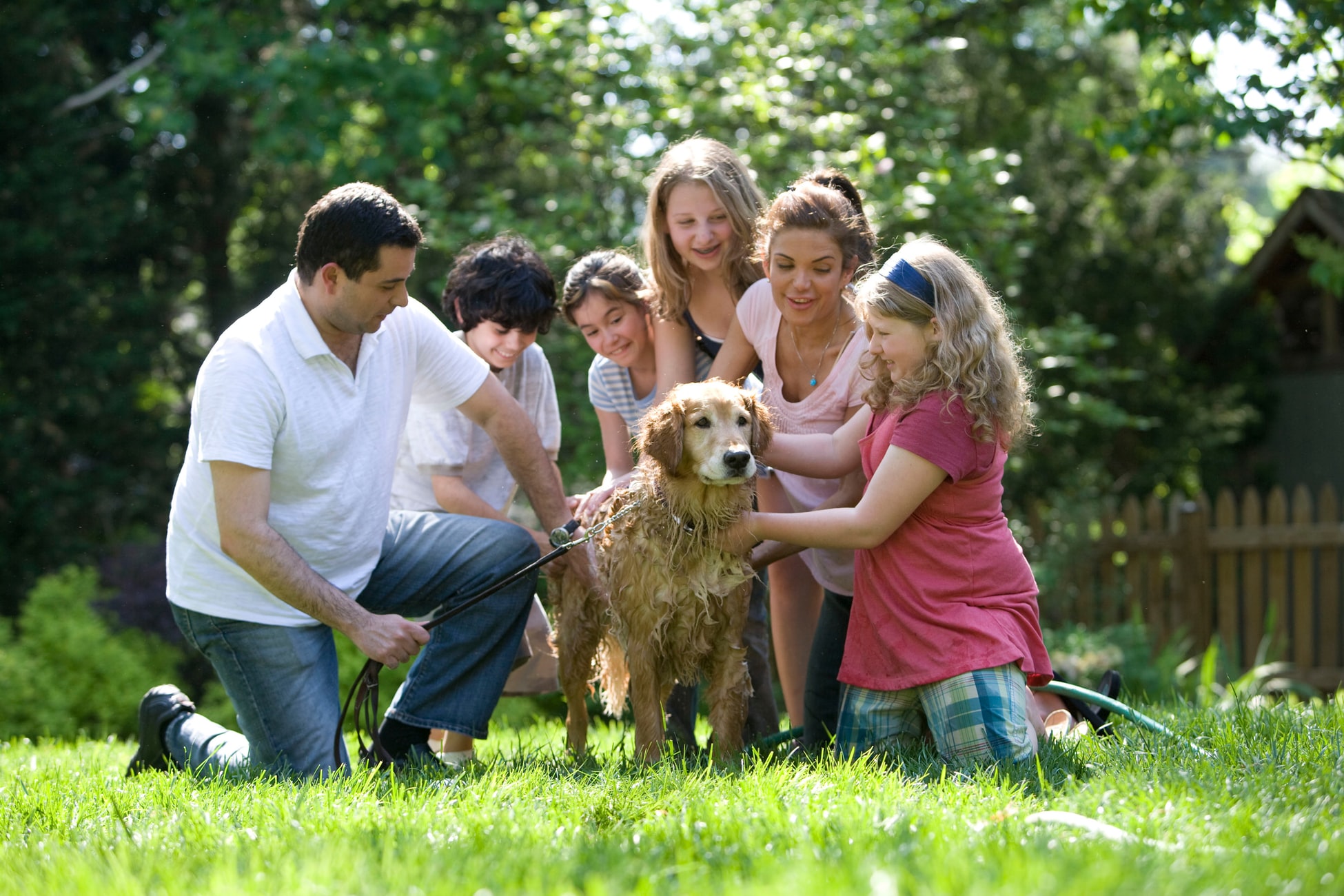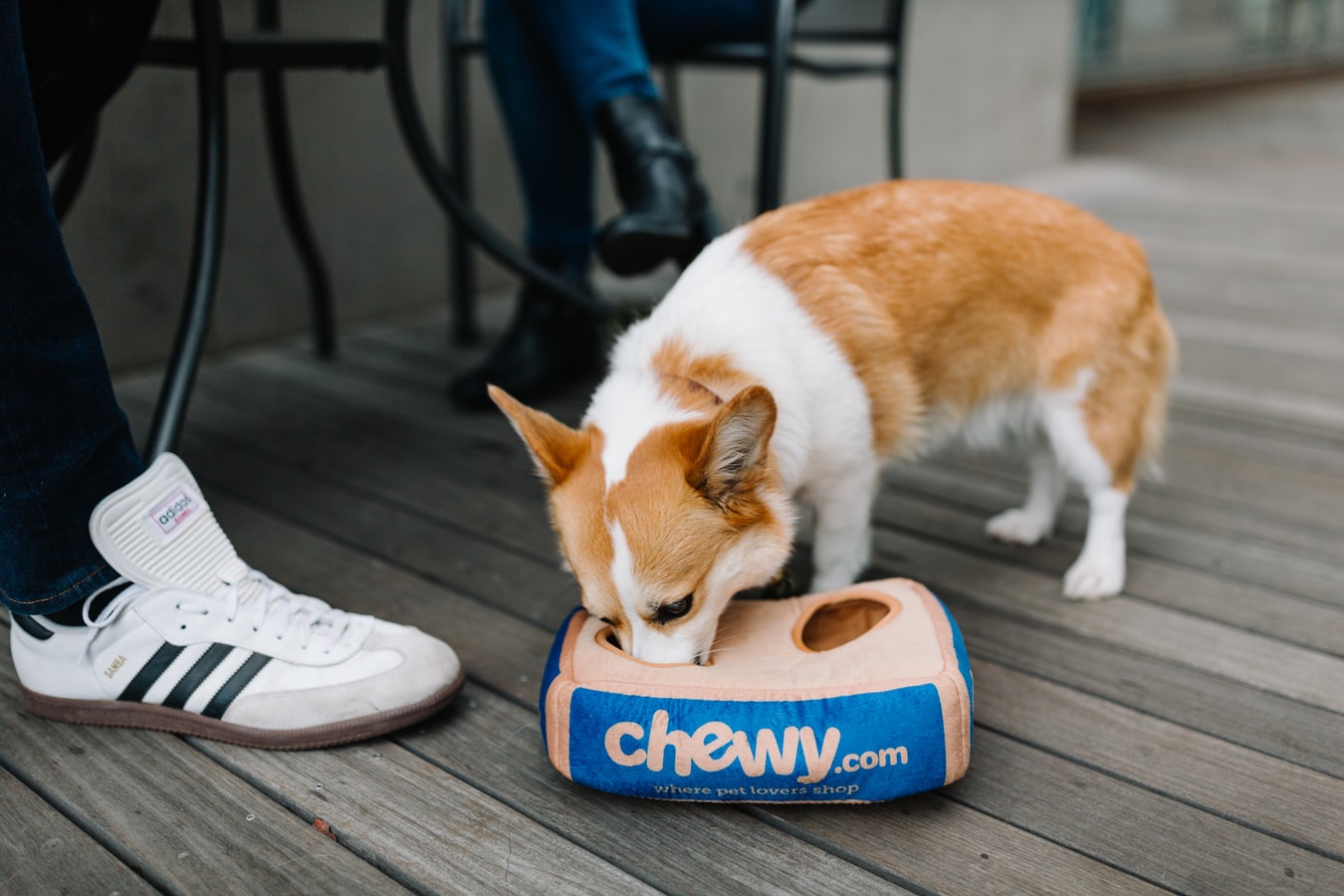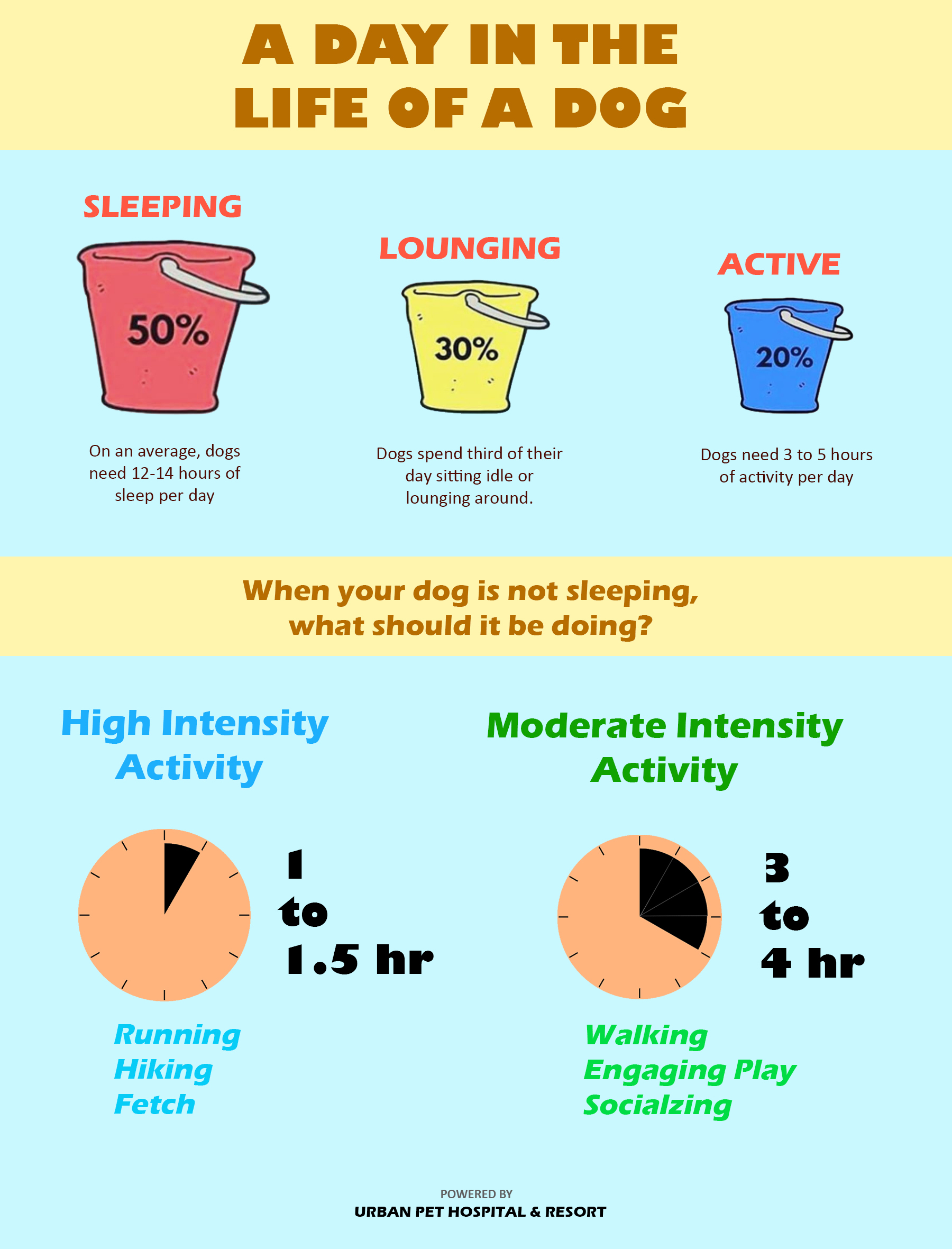Have you ever wondered what your dog typically does in a day? Twenty-four hours is a short time to analyze your pet's life, but this can certainly help you get an insight into what your dog generally does in a day, when it does certain activities, and what it loves to do.
Unlike us humans, dogs often have a regular day with a standard set of activities, including dozing off, snacking, chewing on toys, loo breaks, and playing. Unless it’s a service dog, you can be confident that they will spend most of their time either dozing off or watching the world go by. This isn’t a sign of depression or boredom in dogs. They enjoy lounging around unless they are engaged to play or do doggy chores.
Given the option, most canines are content to watch over their territory from their throne's comfort. However, dogs love their Me-time. A little privacy can do well both for you and them.
How does a dog spend its day?
Here is how a dog usually spends its day. This is the list of activities that almost every dog indulges in day-in or day-out.
Sleeping

You’d be surprised to know that dogs’ can spend 9-14 hours a day sleeping. Unlike humans, dogs have a polyphasic sleep pattern that means they sleep multiple times throughout 24 hours. Out of fourteen hours, a dog is less likely to spend sleeping in a state of drowsiness. Most parts of their irregular sleep are spending in the REM (Rapid eye movement) rest. Dogs need REM sleep to help retain learned skills and to awake quickly.
This isn’t unusual because they have an irregular sleep regime and need much more rest-time than we do. Dogs do need their downtime; otherwise, they can become cranky. Young pups would need at least 18-20 hours of sleep in a day to ensure healthy mental and physical growth and a robust immune system. Senior dogs often require more sleep than adult dogs because aging slows the body down, and doing activities require more energy than they used to.
Many pet owners often ask their vets why to do sleep so much in a day. It’s usually because a dog can burn much energy. They eat significantly less than us humans, but they burn almost all the calories they consume. A dog weighing 25lb will need 557 calories worth of food each day. With all the activities it does throughout the day, it will spend about 557 calories each day. A one-hour long walk can quickly burn over 60 calories.
Working dogs, such as guide dogs, police dogs, or farm dogs, will often sleepless because of their active lifestyles. They’ll likely sleep more during their retirement years.
Tips for helping a dog get enough sleep
To ensure that you provide comfortable nap time to your dog,
- Leave them unattended or provide a private time. This will offer them enough time to take a powerful nap. Puppies need more personal time so they can sleep more often.
- Prepare a sleeping crate or bed where your dog can go and sleep peacefully. This will be their quiet zone in the house.
- Follow a schedule to ensure that they get enough rest and sleep time after playtime, physical exercises, and meals.
Lounging

What does lounging means for a dog? It represents an idle time for dogs. If you’re wondering, watching outside the window, enjoying television shows, and or slouching on the couch with you are parts of a dog lounging. Dogs will spend 30% of their time lounging around.
Generally, puppies work their way up from being under constant care and supervision to being trusted and comfortable being on their own over the course of a day.
How much alone time is "Too Much"?
It would be best if you were wary about giving too much alone time to your dogs. For a dog to spend all of its day alone is too much. They're social animals; hence they enjoy being around people and other animals.
Avoid leaving them inside the room or a basement for a longer duration of time. If you're unable to give them enough time, you can take them to the doggy daycare, where they'll get enough socialization and rest time.
Active Time

An active time doesn’t only mean playing, walking, or eating. Spending time for mental stimulation is also considered busy dog time. Depending on the breed and age, dogs need 3 to 5 hours of activity every day, where 1 to 1.5 hours of activity should be high-intensity in nature, and the rest can be moderate intensity.
The high-intensity activity includes running, jogging, and fetching while walking, engaging in play, and socializing accounts for the moderate-intensity activity.
Eating

Depending on their age, you can feed a dog twice or thrice a day. Adult dogs will only require two meals a day, while a young pup will require more than two.
Eating includes regular meals and snacking or treats. A dog can burn almost all the calories it eats in a day; hence you should ensure that they get the required amount of calories from food and snacks each day.
To ensure that you don't overfeed your dog, adopt the portion control method. Regular exercising and high-intensity activity is essential to ensure that they burn all the calories effectively.
Playing

The average dog gets by with an hour to two of playtime each day. The playtime should come in the form of running, walking, jogging, engaging with interactive toys, and other enrichment activities.
Enough playtimes ensure that young pups grow up to become an active and highly responsive pet. Adult dogs would need a regular amount of walking, running, and playing each day, while senior dogs would only need a minimal amount of exercise.
Playtime also ensures to work on core muscle and joint strengths. Pet obesity is a severe problem that can cause heart and joint problems. With proper playtime, you can ensure that your dog remains fit and active.
Socializing

Dogs should get a minimum of two hours of dedicated social time with humans and other dogs daily.
You need not provide 2 hours of socialization in one-go; instead, you can break it into a chunk of times over the day.
Socialization helps young pups and adult dogs to imbibe new skills, make friends, listen to the owner, and stay happy!
Daily Schedule for Dogs
This is a sample schedule to help establish a good routine for your dogs.
Morning Puppy Schedule
- The day should begin with a loo-time. Quickly take them outside to relieve.
- Feed them a highly nutritious and full breakfast.
- Puppies usually need to relieve themselves after eating, so give another potty break.
- Spend 30-60 minutes of playing and socializing with them, and taking a walk.
- Nap time. Provide 30 minutes to two hours of sleep.
- Give another potty break immediately after they wake up.
- Feed lunch.
Afternoon Puppy Schedule
- After lunch, give another potty break.
- For up to one hour, play with them.
- Give another nap time.
- Take them outside for a loo break.
- And then it’s playtime again.
- Nap time.
- Potty break.
Evening Puppy Schedule
- Feed your dog dinner before you sit down.
- After dinner, take a short walk.
- If time permits, let them spend time playing and interacting with family members.
- Give a quick bathroom trip before bed.
Check this infgo graphics for more information.

Urban Pet Hospital & Resort is the best doggy daycare in Urbandale. We provide 24/7 doggy daycare, boarding, grooming, and veterinarian care to pet dogs and cats. Please consult with our veterinarian in Urbandale to design a custom daily schedule for your dog.